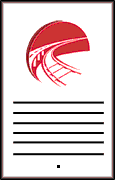Mid-America Transportation Center

Mid-America Transportation Center: Final Reports and Technical Briefs
Date of this Version
2011
Document Type
Article
Citation
Report # MATC-PVAMU: 333 Final Report 25-1121-0001-333
Abstract
A linear asset is defined as an asset whose length plays a critical role in its maintenance. Examples of such assets include roads, pipelines, and railroad tracks. Major features of a roadway asset include traffic lights, number of lanes, speed limits, guardrails, and highway billboards. Linear assets, along with their features, are hard to physically access; therefore, previously captured inventory information files may be inaccurate. To address this problem, some of the transportation agencies are investigating technologies that will assist in solving this asset inventory problem. Radio Frequency Identification (RFID) is a technology that uses communication via radio waves to exchange data between a reader and an electronic tag attached to an object for the purpose of identification and tracking. The primary focus of this paper is to evaluate the feasibility of utilizing RFID as a means of gathering, verifying, and storing information for linear assets. The study investigates the convergence of factors that affect the performance of RFID. The factors investigated in this study are driving speed, tag location on signposts, delineators, and guardrails. The study tested the active RF Code type of RFID technology. The results indicate that for the three (10mph, 20mph, 30mph) vehicle speeds tested, tag readability decreased with an increase in speed.


Comments
Copyright 2011 Mid-America Transportation Center